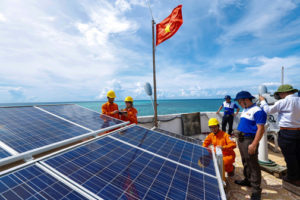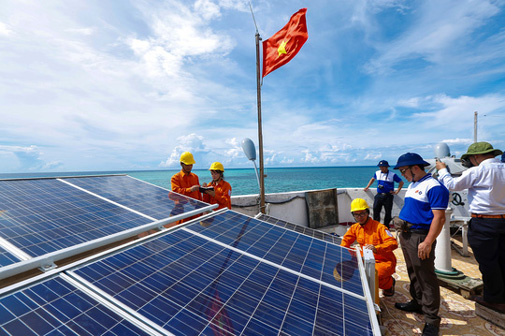
The next steps for Vietnam’s booming solar sector
THANG NAM DO, PAUL BURKE
Vietnam is showing promising early signs of emerging as a major solar producer, Thang Nam Do and Paul Burke write.
2019 was a bumper year for Vietnam’s solar sector. The country overtook Thailand to have Southeast Asia’s largest installed capacity of solar photovoltaic (PV) panels, with more than four gigawatts of capacity installed in the first half of 2019 alone. Electricity generation from solar panels jumped to 4.2 terawatt hours for the year.
The key driver of Vietnam’s boom was a feed-in tariff mechanism for solar power. Solar power projects – both utility-scale and rooftop – that started their operation prior to 30 June 2019 can now sell their electricity to the state-owned Vietnam Electricity and its subsidiaries at a feed-in tariff of $93.50 per MWh for 20 years. The expiry of eligibility for this feed-in tariff led to a rush to install new panels.
In a new paper in Energy Policy, we and colleagues investigated the underlying drivers of Vietnam’s solar boom and provided a discussion of the way forward. The work was carried out under The Australian National University’s Zero-Carbon Energy for the Asia-Pacific Grand Challenge project.
Electricity use has been growing at breakneck speed in Vietnam. The rapid technological progress and cost reductions experienced by solar PV have placed it very much on the agenda as an attractive supply-side option.
The public’s demand for local environmental quality has been another important driver. Air pollution in many urban areas has contributed to public opposition to overreliance on coal. Water and bottom ash issues associated with coal plants are also serious. On some occasions, local authorities have even refused to approve new coal power plants.
The main barrier for the diffusion of utility-scale solar PV in Vietnam is limited grid capacity. Rapid adoption of solar PV in the southern and central provinces has led to some overloads with, for example, solar and wind farms in Ninh Thuận province facing curtailment. Another key challenge is complex administrative procedures.
For the next stage of solar power development, in April 2020 Vietnam’s Prime Minister issued a decision that set a new feed-in tariff of $83.80 per MWh for rooftop solar. Ground-mounted solar is eligible to receive $70.90 per MWh, and the rate for floating solar projects is $76.90 per MWh. Projects that enter commercial operation in 2020 are eligible, with the feed-in tariffs covering their electricity generation over the next 20 years.
So what next? One attractive approach is to plan and facilitate investment in renewable energy zones in the most prospective provinces for renewable energy, such as Ninh Thuận and Bình Thuận. A focus is needed on making sure that renewable electricity is able to make its way from these zones to major demand centres such as Hồ Chí Minh City. Transmitting electricity to the north of the country is also a priority given its lower levels of solar irradiation, especially in winter, and recent water shortages for hydropower operation.
Land issues loom large in Vietnam, and this is true for the solar sector. Fortunately, there is substantial potential for rooftop and floating solar in addition to ground-mounted projects.
Approval processes would ideally ensure that projects are only located in sites in which there are low environmental and social impacts.
There will be a growing role for electricity storage to manage the intermittency issue. The good news is that Vietnam has many potential sites for pumped-hydro energy storage. Batteries and other forms of energy storage are also set to become important.
Reforms to administrative procedures, measures to strengthen power purchase agreements by reducing off-take risks, and introducing a price on carbon are also attractive options for Vietnam. A new law on renewable energy could also be developed to provide a stable legal framework for what is likely to be a growing industry over time. Renewables projects take time to develop, and investors like to know in advance what arrangements will be in place.
Despite the challenges caused by COVID-19, Vietnam’s tentative target of increasing solar PV capacity to 12 gigawatts by 2030 remains highly achievable. Indeed, there may be room for the government to commit to even more ambitious goals. Vietnam also has substantial potential to scale up wind power generation, with multiple offshore projects currently under construction. Before too long, Vietnam’s increasing reliance on coal-fired electricity could well become a thing of the past.
This article is based on research available here. Information about the Zero-Carbon Energy for the Asia-Pacific project can be found here.
Source: https://www.policyforum.net/the-next-steps-for-vietnams-booming-solar-sector/


